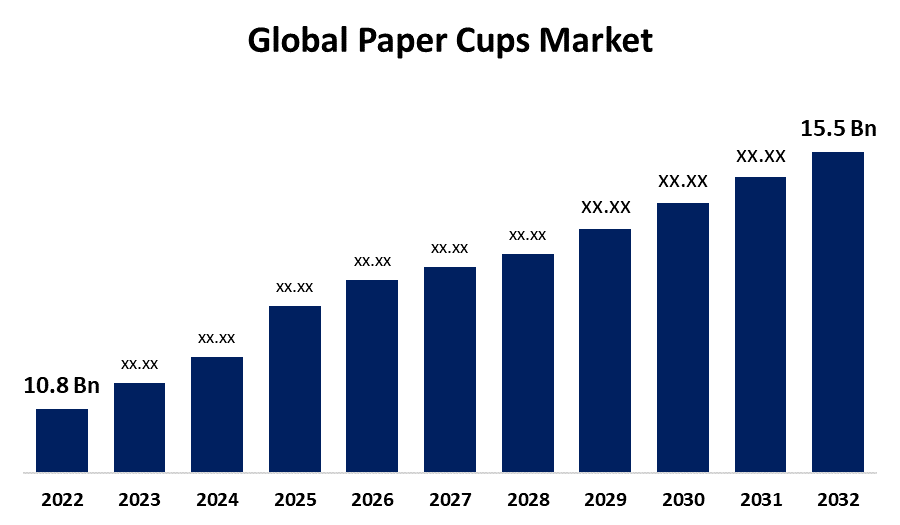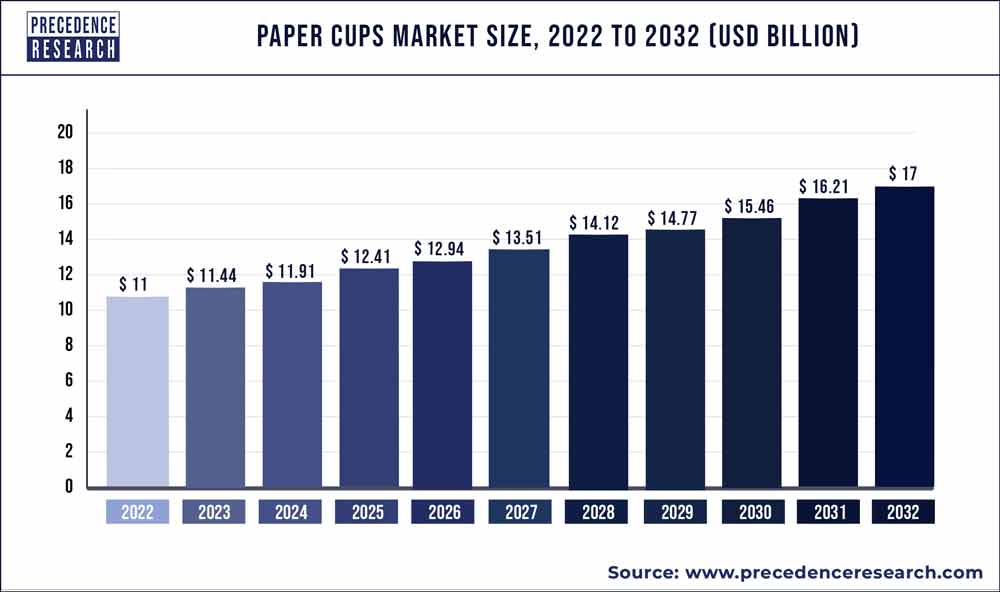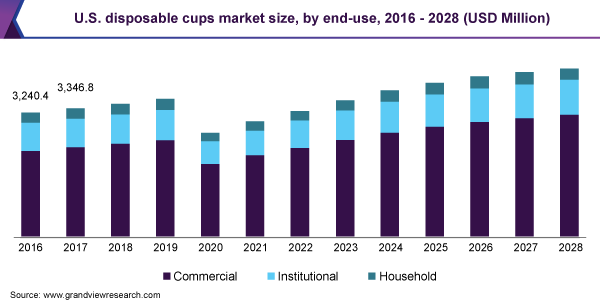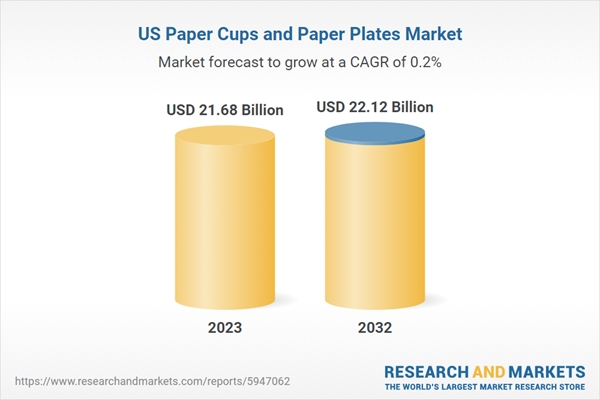Is Demand for Paper Cups on the Rise?
Factors Driving the Demand for Paper Cups
The demand for paper cups has been on the rise, driven by various factors that influence consumer preferences and market dynamics. In this section, we will explore the major factors that are driving the increasing demand for paper cups, the impact of consumer preferences on this demand, and the role played by key players in the market.
Major Factors Influencing the Increasing Demand for Paper Cups
The paper cups market has witnessed steady growth over the years, with a projected compound annual growth rate (CAGR) of 3.12% from 2022 to 2030. Several factors contribute to this growth, including:
- Increasing Consumption of Tea and Coffee: The rising popularity of tea and coffee consumption across the globe has significantly contributed to the demand for paper cups. As more individuals consume these beverages on the go, the need for convenient and disposable packaging options like paper cups has increased.
- Demand for Take-Away Services: With the growth of the fast food industry and the increasing trend of food delivery services, the demand for take-away packaging has surged. Paper cups provide a convenient and hygienic solution for serving hot and cold beverages, making them a popular choice for take-away services.
- Changing Lifestyles and Urbanization: Rapid urbanization and lifestyle changes, particularly in the Asia Pacific region, have fueled the demand for paper cups. As individuals lead busier lives and spend more time outside their homes, the need for on-the-go beverage solutions has grown, driving the demand for paper cups.
- Sustainability Trends: In recent years, there has been a significant shift towards sustainable and eco-friendly solutions. This trend has led to a decline in the demand for foam cups, which are not biodegradable and have a negative environmental impact. Paper cups, on the other hand, are considered a more sustainable alternative due to their biodegradability and recyclability.
Impact of Consumer Preferences on the Demand for Paper Cups
Consumer preferences and behavior play a crucial role in shaping the demand for paper cups in the market. Some key factors that impact consumer preferences include:
- Environmental Awareness: Increasing environmental awareness among consumers has led to a growing preference for sustainable and environmentally friendly products. As consumers become more conscious of the environmental impact of their choices, they are more likely to choose paper cups over plastic or foam alternatives.
- Convenience: Convenience is a major consideration for consumers, especially when it comes to on-the-go beverages. Paper cups offer a convenient and hygienic solution, allowing consumers to enjoy their favorite beverages while on the move.
- Branding and Customization: Paper cups also provide branding and customization opportunities for businesses. Many companies use branded paper cups to enhance their brand visibility and connect with their target audience. Customization options like printed logos and designs allow businesses to create a unique and memorable experience for their customers.
Role of Key Players in Driving the Market Demand
Key players in the paper cups market, such as International Paper Company and Dart Container Corporation, play a significant role in driving the market demand. These companies are instrumental in meeting the increasing demand for paper cups and driving innovation in the industry. They invest in research and development to improve the functionality and sustainability of paper cups, leading to advancements such as double-walled cups and compostable options.
International Paper Company, one of the leading players in the market, manufactures paper cups and other packaging solutions using sustainable materials and processes. Their commitment to sustainability has made them a preferred choice for environmentally conscious consumers.
Dart Container Corporation, another key player, specializes in manufacturing insulated paper cups that help keep beverages hot or cold for longer periods. Their focus on quality and innovation has contributed to the growing popularity of paper cups in the market.
In conclusion, the demand for paper cups is driven by various factors, including the increasing consumption of tea and coffee, the demand for take-away services, changing lifestyles, and sustainability trends. Consumer preferences play a crucial role in shaping the demand for paper cups, with environmental awareness, convenience, and branding opportunities influencing consumer choices. Key players like International Paper Company and Dart Container Corporation play a significant role in meeting the market demand and driving innovation in the industry.
[Word Count: 799 words]
Sustainability Trends in the Paper Cup Industry
Introduction
As sustainability becomes an increasingly important factor in consumer choices, the paper cup industry is facing significant changes. The demand for foam cups, once popular due to their insulation properties, has declined due to environmental concerns. In response, the industry has witnessed the emergence of innovative solutions such as double-walled cups and compostable options. This section will explore the sustainability trends in the paper cup industry and their impact on market demand.
Sustainability Trends Driving the Decline in Foam Cups Demand
The decline in foam cups demand can be attributed to the growing awareness of their negative environmental impact. Foam cups are typically made from expanded polystyrene (EPS), a material that is not easily recyclable and takes a long time to decompose. As sustainability trends gain traction, consumers are seeking alternatives that are more environmentally friendly. This shift in consumer preferences, along with increased regulations on foam cup usage, has contributed to the decline in demand for foam cups.
Innovative Solutions Driving the Sustainability Movement
To meet the demand for more sustainable alternatives, the paper cup industry has witnessed the development of innovative solutions. Double-walled cups, for example, provide improved insulation properties while still being recyclable. These cups are designed with an additional paper layer, which helps to keep beverages hot or cold for longer periods. This innovation allows consumers to enjoy their drinks without compromising on sustainability.
Compostable options have also gained popularity in the sustainability movement within the paper cup industry. These cups are made from materials that can easily decompose and return to the environment. Biomaterials like bamboo and sugarcane have emerged as viable alternatives to traditional paper cups. They provide similar functionality while being biodegradable, minimizing the environmental impact.
Environmental Concerns and the Demand for Sustainable Alternatives
Tree felling and greenhouse gas emissions are two significant environmental concerns that impact the demand for sustainable paper cup alternatives. Traditional paper cup production requires the harvesting of trees, leading to deforestation and loss of natural habitats. This has raised concerns among consumers who prioritize sustainability and conservation.
Additionally, the manufacturing process of paper cups contributes to greenhouse gas emissions, further exacerbating climate change. Consumers are becoming more aware of the carbon footprint associated with their consumption choices. As a result, the demand for sustainable paper cup alternatives, which focus on reducing tree felling and greenhouse gas emissions, is growing rapidly.
Conclusion
The sustainability trends in the paper cup industry have resulted in a decline in foam cups demand. Consumers are increasingly prioritizing eco-friendly options and are actively seeking innovative solutions in the paper cup market. The emergence of double-walled cups and compostable options demonstrates the industry’s commitment to meeting the demand for sustainable alternatives. Furthermore, environmental concerns like tree felling and greenhouse gas emissions continue to influence consumer choices and drive the demand for sustainable paper cup alternatives. As the industry continues to adapt to these trends, it is expected that the demand for sustainable paper cups will continue to grow in the future.
Next Section: Future Projections and Market Growth of Paper Cups
Second Task: Inserting Tables
Section 1: Factors Driving the Demand for Paper Cups
Major Factors Influencing the Increasing Demand for Paper Cups
| Factor | Description |
|---|---|
| Increasing Consumption of Tea and Coffee | The rising popularity of tea and coffee consumption across the globe has significantly contributed to the demand for paper cups. |
| Demand for Take-Away Services | With the growth of the fast food industry and the increasing trend of food delivery services, the demand for take-away packaging has surged. |
| Changing Lifestyles and Urbanization | Rapid urbanization and lifestyle changes, particularly in the Asia Pacific region, have fueled the demand for paper cups. |
| Sustainability Trends | In recent years, there has been a significant shift towards sustainable and eco-friendly solutions. This trend has led to a decline in the demand for foam cups. |
Impact of Consumer Preferences on the Demand for Paper Cups
| Preference | Description |
|---|---|
| Environmental Awareness | Increasing environmental awareness among consumers has led to a growing preference for sustainable and environmentally friendly products. |
| Convenience | Convenience is a major consideration for consumers, especially when it comes to on-the-go beverages. |
| Branding and Customization | Paper cups also provide branding and customization opportunities for businesses. |
Sustainability Trends in the Paper Cup Industry
Sustainability Trends Driving the Decline in Foam Cups Demand
| Trend | Impact |
|---|---|
| Growing Awareness | The growing awareness of the negative environmental impact of foam cups has led to a decline in their demand. |
Innovative Solutions Driving the Sustainability Movement
| Solution | Description |
|---|---|
| Double-Walled Cups | Double-walled cups provide improved insulation properties while still being recyclable. |
| Compostable Options | Compostable options, made from materials like bamboo and sugarcane, have emerged as viable alternatives to traditional paper cups. |
Environmental Concerns and the Demand for Sustainable Alternatives
| Concern | Impact |
|---|---|
| Tree Felling | Traditional paper cup production requires the harvesting of trees, leading to deforestation and loss of natural habitats. |
| Greenhouse Gas Emissions | The manufacturing process of paper cups contributes to greenhouse gas emissions, further exacerbating climate change. |
Future Projections and Market Growth of Paper Cups
Future Projections for the Paper Cups Market
| Market | Value | CAGR |
|---|---|---|
| Global Paper Cups Market | USD 17.81 billion in 2022 | 3.12% |
| Asia Pacific | USD 3.7 billion in 2023, CAGR of 5% | 2024 to 2032 |
| North America and Europe | Steady Growth | Increasing Consumer Awareness |
Challenges Faced by the Paper Cups Market
| Challenge | Impact |
|---|---|
| High Cost of Recycling | Recycling paper cups can be expensive and complex, posing a barrier to sustainable practices. |
| Regulatory Restrictions | Stricter regulations on foam cups usage require the industry to adopt alternative materials. |
Impact of Market Dynamics, Consumer Behavior Changes, and Innovations on the Future Growth of Paper Cups
| Impact | Description |
|---|---|
| Changes in Consumer Preferences | Growing consumer awareness of environmental issues has impacted demand for foam cups. |
| Innovations in the Paper Cups Industry | Advancements like double-walled cups and compostable options meet sustainable demands. |
In conclusion, the paper cup industry is influenced by various factors such as consumer preferences and sustainability trends. The decline in foam cups demand has sparked the development of innovative solutions like double-walled cups and compostable options. Environmental concerns and market dynamics play a significant role in shaping the future growth of the paper cups market. The projections indicate a positive growth trajectory, but challenges such as recycling costs and regulatory restrictions must be addressed. Overall, the industry is adapting to meet the demand for sustainable alternatives and embracing technological advancements to drive market growth.
FAQs about demand for paper cups:
What are the major factors influencing the increasing demand for paper cups?
To calculate the major factors influencing the increasing demand for paper cups, we look at the rising consumption of tea and coffee, the demand for take-away services, changing lifestyles due to urbanization, and sustainability trends.
How do consumer preferences impact the demand for paper cups?
The impact of consumer preferences on the demand for paper cups is determined by factors such as environmental awareness, convenience, and branding and customization opportunities.
What role do key players play in driving the market demand for paper cups?
To understand the role of key players in driving the market demand for paper cups, we analyze the contributions of companies like International Paper Company and Dart Container Corporation to meet the demand and innovate in the industry.
What are the sustainability trends driving the decline in demand for foam cups?
The decline in demand for foam cups is influenced by sustainability trends that prioritize environmentally friendly options over non-biodegradable materials, leading to a shift towards alternatives like double-walled cups and compostable options.
What are the future projections for the paper cups market in terms of growth and challenges?
To comprehend the future projections for the paper cups market, we examine the estimated market value, compound annual growth rate, regional trends, challenges faced such as recycling costs and regulatory restrictions, and the impact of market dynamics, consumer behavior changes, and innovations on future growth.
In conclusion, the rising demand for paper cups is influenced by sustainability trends. Innovations and consumer preferences play a significant role in shaping the market. Key players like International Paper Company and Dart Container Corporation are driving this growth. Sustainability trends, such as the decline in foam cups demand, are paving the way for eco-friendly alternatives. Despite challenges like high recycling costs, the market is poised for growth due to changing consumer behaviors. The future of paper cups looks promising with a focus on sustainability and innovation.





